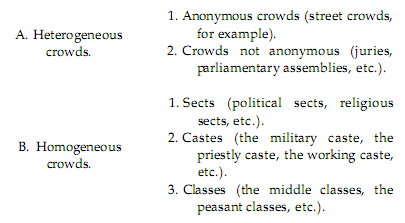It all comes back to sex and death, so here is the appropriate second installment, inspired by this afternoon’s romp through the bibliography of Bowker, Geoffrey C. & Star, Susan Leigh. (1999) “Sorting things out: Classification and its consequences.” MIT Press:
G Kroemer, W S El-Deiry, P Golstein, M E Peter, D Vaux, P Vandenabeele, B Zhivotovsky, M V Blagosklonny, W Malorni, R A Knight, M Piacentini, S Nagata and G Melino. (2005) Classification of cell death: recommendations of the Nomenclature Committee on Cell Death. Cell Death and Differentiation (2005) 12, 1463–1467. doi:10.1038/sj.cdd.4401724
When to classify a cell as dead?
…when any of the following molecular or morphological criteria are met: (1) the cell has lost the integrity of the plasma membrane, as defined by vital dyes in vitro; (2) the cell including its nucleus has undergone complete fragmentation into discrete bodies (which are frequently referred to as ‘apoptotic bodies’); and/or (3) its corpse (or its fragments) have been engulfed by an adjacent cell in vivo. Thus, ‘dead cells’ would be different from bona fide ‘dying cells’ that are in the process of cell death, which can occur through a variety of different pathways (see below). Moreover, cells whose cell cycle is arrested (as it occurs in senescence) would be considered as alive and the expression ‘replicative cell death’ (which alludes to the loss of the clonogenic capacity) should be avoided.
Kinds of cell death:
- apoptosis
- Autophagy
- Necrosis/oncosis
- Mitotic catastrophe (my favorite)
- Anoikis
- Excitotoxicity (my second favorite)
- Wallerian degeneration
- Cornification
~~~~~
Douglas, John E.; Burgess, Ann W.; Burgess, Allen G. & Ressler, Robert K. (eds.) (2006) Crime Classification Manual: A Standard System for Investigating and Classifying Violent Crimes. Wiley.
~~~~~
Dindo, Daniel; Demartines, Nicolas & Clavien, Pierre–Alain. (2004) “Classification of Surgical Complications: A New Proposal With Evaluation in a Cohort of 6336 Patients and Results of a Survey.” Annals of Surgery 240(2): 205-213.
Furthermore, death is the worst complication for a physician and a patient, but may be associated with low cost, thus decreasing the impact of cost analyses for outcome research. For these reasons, the payer’s perspective cannot be included in such classification system, and we would argue that it should be computed and presented separately.
~~~~~
Rees, Gethin (2007) Culture and classification in the C.S.I. lab (review of Stefan Timmermans, Postmortem: How medical examiners explain suspicious deaths. Chicago: University of Chicago Press, 2006). Metascience 16:565-569.
The pathologist has an altruistic role in determining the cause of death; and by reducing individual lives to pathological categories they provide information to public health bodies, which, in turn, provide hope that these types of death can be limited or avoided in future. Of course, the pathologist is not simply passive in determining which classification a death should be labelled: they actively create the boundaries of each category and actively determine what constitutes a suicide, homicide, etc.
~~~~~
Gordijn, S. J.; Korteweg, F. J.; Erwich, Jan Jaap H.M.; Holm, J. P.; van Diem, M. T.; Bergman, K. A. & Timmer, A. (2009) A multilayered approach for the analysis of perinatal mortality using different classification systems. European Journal of Obstetrics & Gynecology and Reproductive Biology. (in press)
~~~~~
A couple of notes:
1. The word “thrombosis” gives me the heebie-jeebies.
2. Let’s start a Nomenclature Committee for Information/Library Science. It will have two initial subcommittees: (1) Subcommittee Against Terrible Neologisms; and (2) Subcommittee For Defining What You Mean By the Terms You Use.
